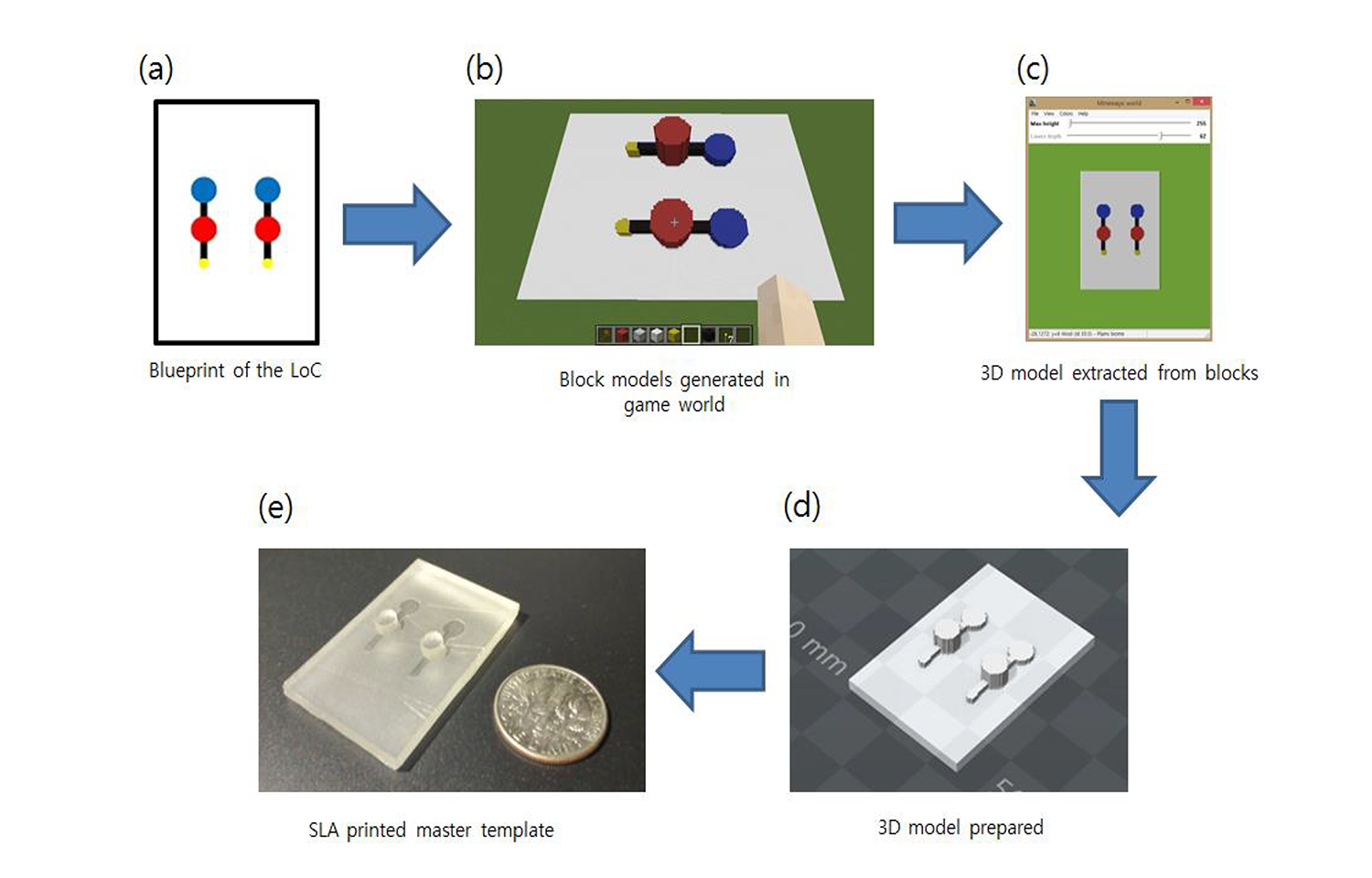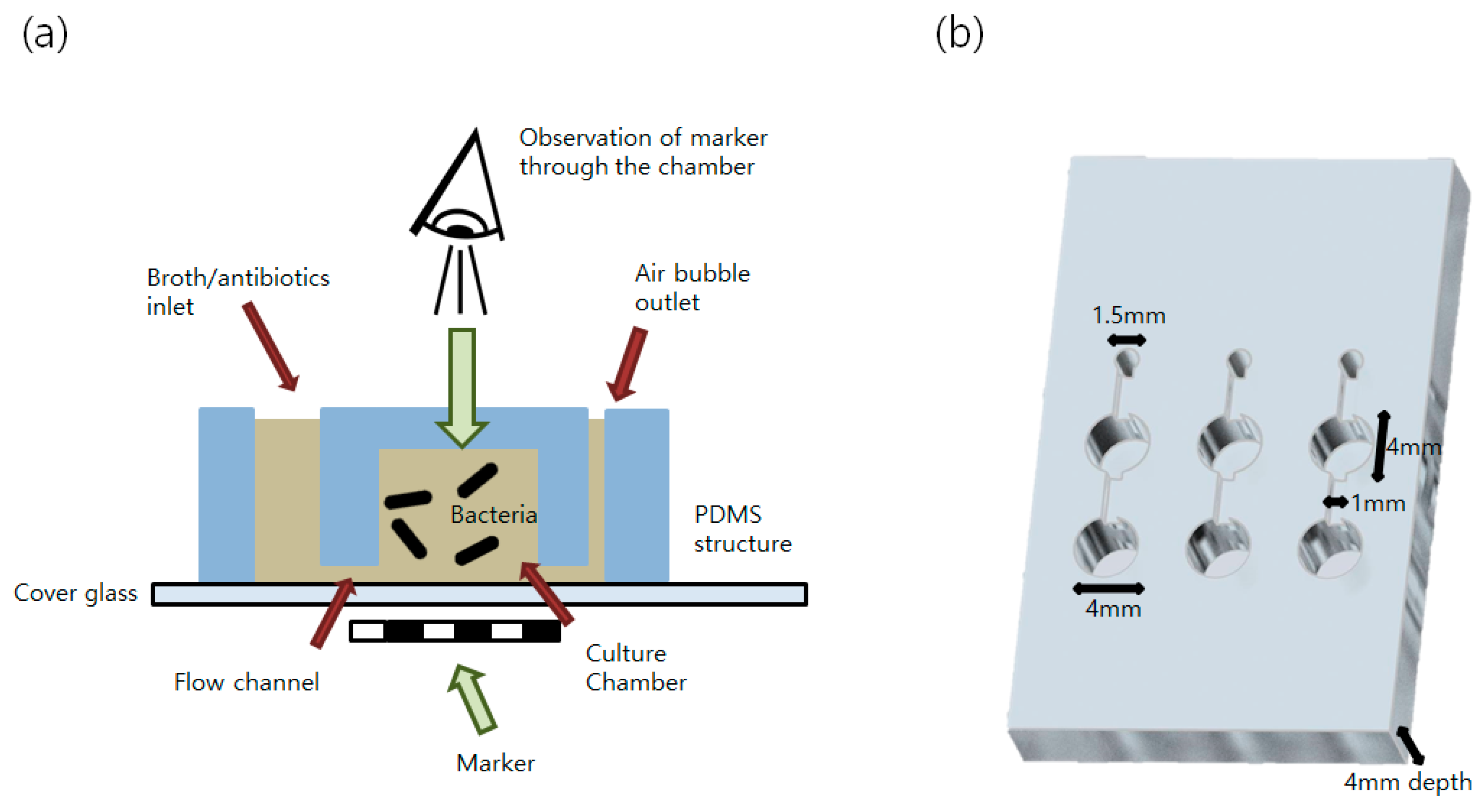Biomicrofluidics Lab., KAIST
Department of Mechanical Engineering, KAIST
Undergraduate Student Researcher, June 2016 ~ June 2018
From 2016 Summer, I was an undergraduate researcher in Biomicrofluidics Lab. of KAIST. The mission of the lab is “to understand the mechanism of biological phenomenon by employing microfluidic platform”.
During my time in Biomicrofluidics, I learned the basics of microfluidics research, as well as practiced several protocols common in the biological research. Additionally, under the supervision of Prof. Jessie S. Jeon and assistance from Seunggyu Kim and Wanho Kim, I participated in the following projects.
MineLoC: A Rapid Production of Lab-on-a-Chip Biosensors Using 3D Printer and the Sandbox Game, Minecraft (2018)

In short: Developed a pipeline for designing and producing master templates (molds) for Lab-on-a-Chip using a popular sandbox game ‘Minecraft’. Achieved high accuracy while retaining user-friendliness of the game.
Long Version
Here, MineLoC is described as a pipeline developed to generate 3D printable models of master templates for Lab-on-a-Chip (LoC) by using a popular multi-player sandbox game “Minecraft”. The user can draw a simple diagram describing the channels and chambers of the Lab-on-a-Chip devices with pre-registered color codes which indicate the height of the generated structure. MineLoC converts the diagram into large chunks of blocks (equal sized cube units composing every object in the game) in the game world. The user and co-workers can simultaneously access the game and edit, modify, or review, which is a feature not generally supported by conventional design software. Once the review is complete, the resultant structure can be exported into a stereolithography (STL) file which can be used in additive manufacturing. Then, the Lab-on-a-Chip device can be fabricated by the standard protocol to produce a Lab-on-a-Chip. The simple polydimethylsiloxane (PDMS) device for the bacterial growth measurement used in the previous research was copied by the proposed method. The error calculation by a 3D model comparison showed an accuracy of 86%. It is anticipated that this work will facilitate more use of 3D printer-based Lab-on-a-Chip fabrication, which greatly lowers the entry barrier in the field of Lab-on-a-Chip research
K. Kim, H. Kim, S. Kim, J. S. Jeon, “MineLoC: A Rapid Production of Lab-on-a-Chip Biosensors Using 3D Printer and the Sandbox Game, Minecraft” Sensors 18.6 (2018): 1896 (Co-first author) [Link]
Vision Marker-Based In Situ Examination of Bacterial Growth in Liquid Culture Media (2016)

In short: Developed a Lab-on-a-chip that measures bacterial growth via optical methods, that can be directly performed on-site using WebCams.
Long Version
The detection of bacterial growth in liquid media is an essential process in determining antibiotic susceptibility or the level of bacterial presence for clinical or research purposes. We have developed a system, which enables simplified and automated detection using a camera and a striped pattern marker. The quantification of bacterial growth is possible as the bacterial growth in the culturing vessel blurs the marker image, which is placed on the back of the vessel, and the blurring results in a decrease in the high-frequency spectrum region of the marker image. The experiment results show that the FFT (fast Fourier transform)-based growth detection method is robust to the variations in the type of bacterial carrier and vessels ranging from the culture tubes to the microfluidic devices. Moreover, the automated incubator and image acquisition system are developed to be used as a comprehensive in situ detection system. We expect that this result can be applied in the automation of biological experiments, such as the Antibiotics Susceptibility Test or toxicity measurement. Furthermore, the simple framework of the proposed growth measurement method may be further utilized as an effective and convenient method for building point-of-care devices for developing countries.
K. Kim, D. Choi, H. Lim, H. Kim, J. S. Jeon, “Vision Marker-Based In-Situ Examination of Bacterial Growth in Liquid Culture Media”. Sensors 16.12 (2016): 2179. [Link]
